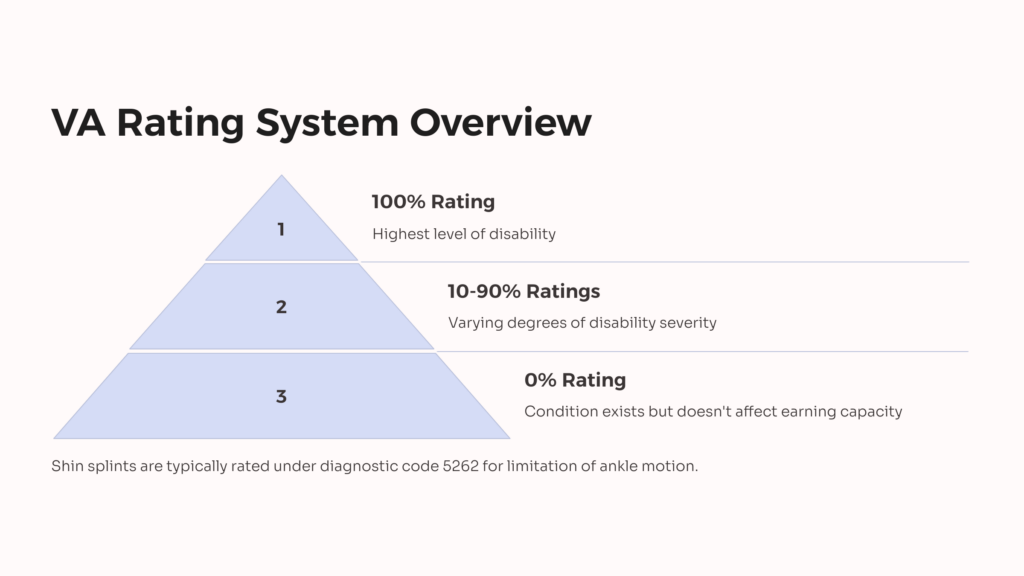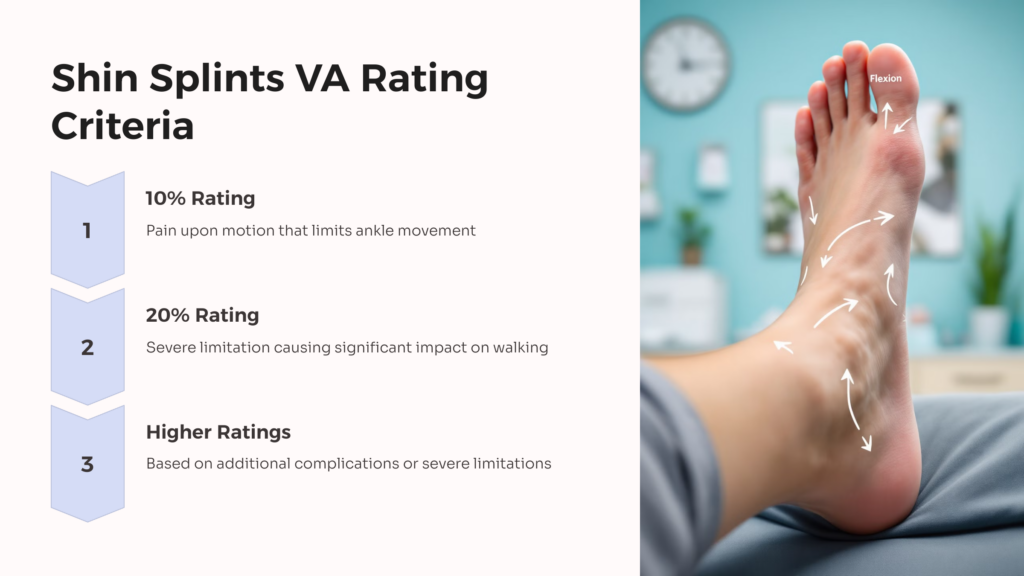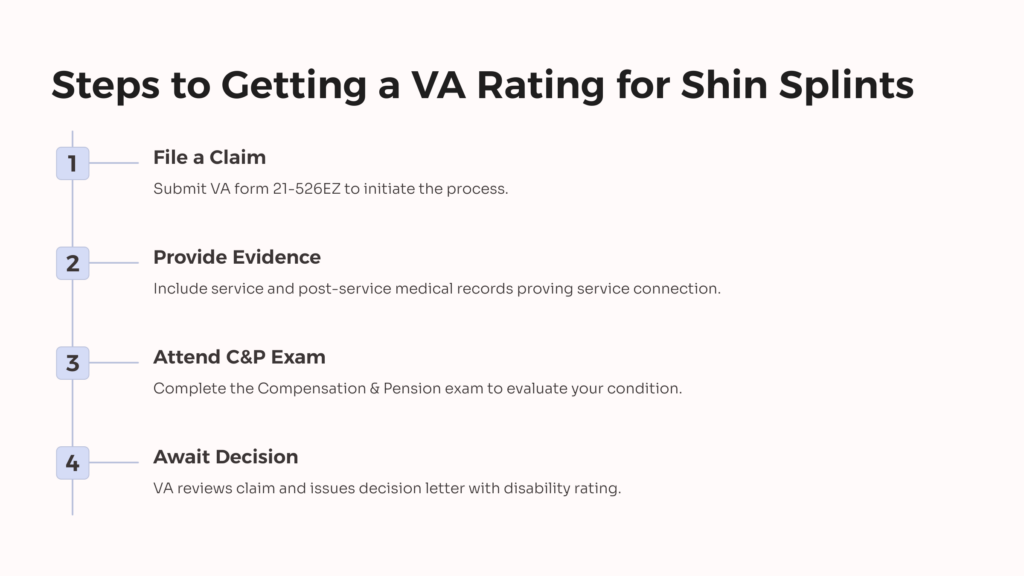Shin splints is a term that represents a series of painful conditions affecting the shin bone and the muscles around it. Generally sparked by physical activities, they can cause significant discomfort and negatively affect the quality of life. The Department of Veterans Affairs (VA) uses a rating system to determine the compensation veterans receive for service-connected disabilities, including shin splints. This article will delve into understanding shin splints, their prevalence among veterans, the VA rating system, and how to navigate through the VA rating process for shin splints.
Understanding Shin Splints

What Are Shin Splints?
Shin splints, medically known as “medial tibial stress syndrome,” are characterized by pain along the inner edge of the shinbone (tibia). They occur when muscles, tendons, and bone tissue become overworked due to increased physical activity, contributing to inflammation and pain. This condition is commonly experienced by athletes and military personnel who engage in rigorous exercises, particularly running and jumping activities.
Symptoms of Shin Splints
Initial symptoms of shin splints often involve mild swelling in the lower leg, natural tenderness or pain along the inner part of the lower leg, and acute discomfort during or after exercise. As the condition worsens, the pain can become so severe that it hinders the ability to perform physical activities or even causes pain when at rest.
Diagnosing Shin Splints
Physicians typically diagnose shin splints based on the patient’s medical history, a physical exam, and sometimes imaging tests such as X-rays, bone scans, or MRIs. While imaging isn’t always necessary, it can rule out other conditions that could cause similar symptoms, like a stress fracture.
Shin Splints and Veterans
Shin Splints in Veterans
Given the physical rigor of military training and service, veterans are particularly susceptible to developing shin splints. These conditions can impact everyday activities, affecting both professional pursuits and quality of life. A study conducted by the American Academy of Orthopaedic Surgeons found that shin splints accounted for 13.2% of all running injuries among military personnel.
The Role of VA in Supporting Veterans with Shin Splints
The VA plays an instrumental role in providing health care and disability benefits to veterans affected by service-related conditions, including shin splints. It delivers medical care to manage symptoms, provides VA disability compensation, and facilitates rehabilitation services when required.
Understanding the VA Rating System

Overview of the VA Rating System
The VA disability rating system uses a schedule of ratings to assess the severity of a veteran’s disability and determine their monthly compensation. Ratings range from 0 to 100% in 10% increments. Each condition has a diagnostic code with associated rating criteria. Notably, while shin splints don’t have a specific diagnostic code, they are usually rated analogously under diagnostic code 5262, which covers limitation of ankle motion.

How Shin Splints are rated in the VA System
A shin splints VA rating will be based on the limitation of motion, specifically ankle motion. For instance, if a veteran experiences pain upon motion that limits ankle movement, they would typically earn a 10% rating. However, if there is more severe limitation, causing a significant impact in walking or nearly unable to bend the ankle, a veteran might receive a 20% rating.
Navigating the VA Rating Process for Shin Splints
Steps to Getting a VA Rating for Shin Splints

To obtain a VA disability rating for shin splints, veterans should follow these steps:
- File a claim: Submit a VA form 21-526EZ to initiate the process.
- Provide evidence: Include service medical records proving that your shin splints are service-connected and any post-service medical records.
- Compulsory C&P exam: The VA normally requires a Compensation & Pension (C&P) exam to evaluate your condition.
- Awaiting result: Once the VA has all necessary documents, they will review your claim and issue a decision letter with detailed information about your disability rating.
Factors Impacting the VA Rating for Shin Splints
Several factors can affect your shin splints VA rating, including pain during the motion of the affected limb, restricted motion, and physical capacity. Veterans are encouraged to provide as much detail as possible during the C&P exam to ensure they receive a fair and accurate rating.
Conclusion
Shin splints can be a drastic hindrance to everyday life, impacting both physical mobility and mental health. Veterans suffering from shin splints have the right to apply for VA disability benefits to compensate for their service-connected disability. While the VA disability claim process may seem intimidating, understanding the steps to take and factors that impact your rating, and ultimately your VA disability benefits, can be incredibly beneficial.
 AllVeteran.com Advisors
AllVeteran.com Advisors
With expertise spanning local, state, and federal benefit programs, our team is dedicated to guiding individuals towards the perfect program tailored to their unique circumstances.


















